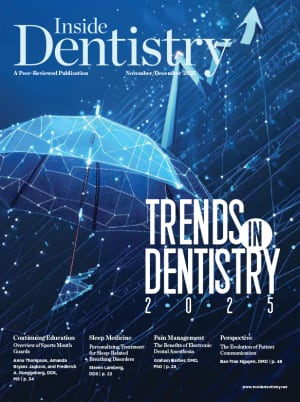A salivary amylase gene copy number could play a role in oral health, according to a recent study.
The gene AMY1 is capable of promoting the breakdown of rapidly digestible starches through the salivary amylase enzyme. Prior studies have uncovered a potential correlation between the gene and the likelihood of developing dental caries and periodontal disease. For instance, individuals consuming more rapidly digestible starches may have an increased risk of developing oral health issues compared with those who consume more slowly digestible starches such as whole grains. Nonetheless, research exploring how AMY1 copy number interacts with starch to influence oral biofilms has been sparse.
In the in vitro study, researchers examined how the gene affected response to starch among oral microbiota. Saliva samples of 31 individuals with differing AMY1 copy numbers were used to culture oral biofilms and assess self-reported oral health issues. Media either contained or did not contain starch.
Biofilm alpha diversity declined with the presence of starch, according to lead study author Dorothy K. Superdock, PhD, and her colleagues. Further, they found that the interaction between copy number and starch content resulted in changes in oral microbiota community composition, promoting the growth of Atopobium and Veillonella bacteria—both of which have previously been shown to be involved in dental caries and periodontal disease.
Dental caries occur when carbohydrates, chiefly sugars, are fermented by bacteria present in oral biofilms. This process produces acids that demineralize the enamel and decrease dental plaque pH levels. Bacteria such as Streptococcus mutans, Actinomyces, Atopobium, Bifidobacterium, Scardovia, and Veillonella have been implicated in the progression of dental caries. Periodontal disease has been linked to the presence of bacteria like Porphyromonas gingivalis and P endodontalis—which have been observed in higher abundance in individuals with high AMY1 copy numbers.
The findings indicate the potential for saliva to be used as a biomarker of oral diseases. Copy numbers of the AMY1 gene could also be used to inform dental hygiene habits in certain individuals at greater risk of dental caries and periodontal disease, noted Dr. Superdock and colleagues.
"This study provides evidence of an important interplay between diet, genetics, and oral microbiota, offering new insights into the impact of evolution on oral health," they concluded.
No conflicts of interest were reported. The research was supported in part by a Schwartz Research Fund Award for Women and Underrepresented Faculty in the Life Sciences and the National Institutes of Health. Additional disclosures can be found in the published study.
Source: Microorganisms
